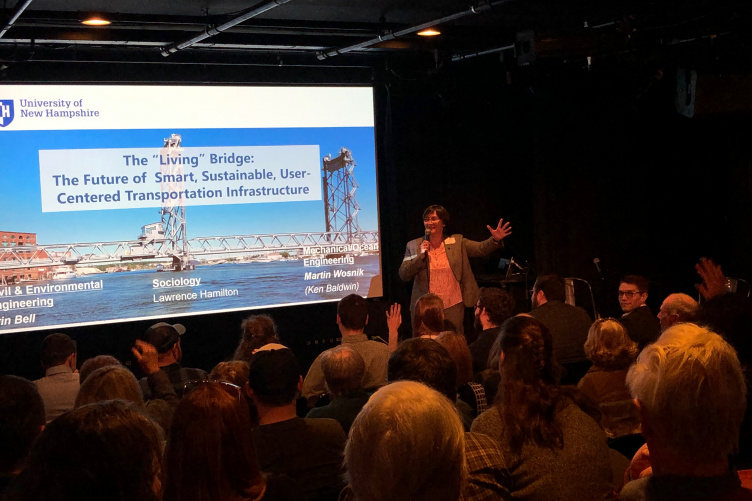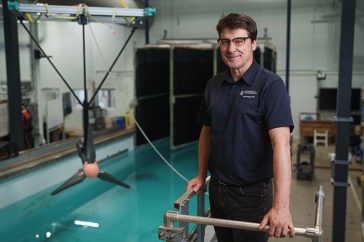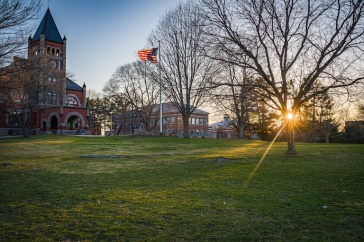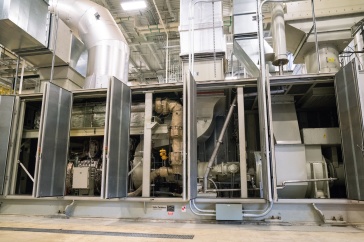
At the tail end of this year’s Graduate Student Appreciation Week, UNH students and faculty gathered with the local Portsmouth community for a special evening in honor of the Living Bridge Project.
The Living Bridge, which is both a landmark for the Seacoast community and a living laboratory for researchers and engineers, is located in Portsmouth, just up the road from UNH. The purpose of this event was to not only celebrate the completion of the Living Bridge Project, but also to share the years of research and labor that went into this project with the local community.
The event, held at the Music Hall in Portsmouth, was free to attend, though registration was required, and it eventually “sold out.” Interim Dean of the UNH Graduate School Cari Moorhead emceed the panel, which included several graduate students who were involved in the project. Following the panel, event attendees were invited to walk over to the Living Bridge site.
“As an R1 institution, UNH engages in world class research, much of which directly impacts communities here in New Hampshire,” Interim Dean Moorhead said. “While the Living Bridge project is indicative of this ongoing research, The Living Bridge event was an opportunity for those involved in the project to discuss their roles with the community. We were thrilled by the turnout and discussion at the event and look forward to participating in future projects of this kind.”
According to its description, this bridge is instrumented with sensors that capture structural performance, traffic patterns, environmental conditions, the behavior of innovative bridge design elements, and enable and promote community engagement. The information collected with these sensors is shared with researchers, bridge designers, and the bridge-owner, but also, where appropriate, with K-12 classrooms and the public.
The bridge sensor network, information communication system, and aesthetic lighting are powered by a locally available renewable energy resource, tidal energy. This bridge has the capability to advance all aspects of community engagement with infrastructure, clean energy innovation in tidal energy conversion, energy storage, structural and environmental impact, and social perception of our engineered environment. This “smart bridge” provides a platform for continued innovation of sensor, communication, and energy technologies.
Graduate students Kaelin Chancey and Christian Harris both played important roles in the Living Bridge Project and were able to share their experiences on the panel.
“I’m currently pursuing my MS in Mechanical Engineering and have been working on the Living Bridge project for a total of 3.5 years, including my time as an undergraduate,” said Chancey. “The skills that I have developed from this project have shaped me as an engineer and strengthened my interest in renewable energy. It was nice to see so many people interested in this project that I have invested so much time in.”
Harris, a masters student in the Department of Civil and Environmental Engineering, said of his experience, “I’ve been working on the Gusset-less Connection Fatigue Testing portion of the Living Bridge Project for almost 2 years now, but the Music Hall Event was the first time I was able to meet and hear from many of the other professors and students involved. It was great to learn more about aspects of this project outside of the Civil Engineering realm, such as the social science research and the middle/elementary school outreach. I’m very glad that I was able to participate in this event and in the future, I hope to be a part of more opportunities like this.”
-
Written By:
Lily Greenberg '21G | Grad School



















































